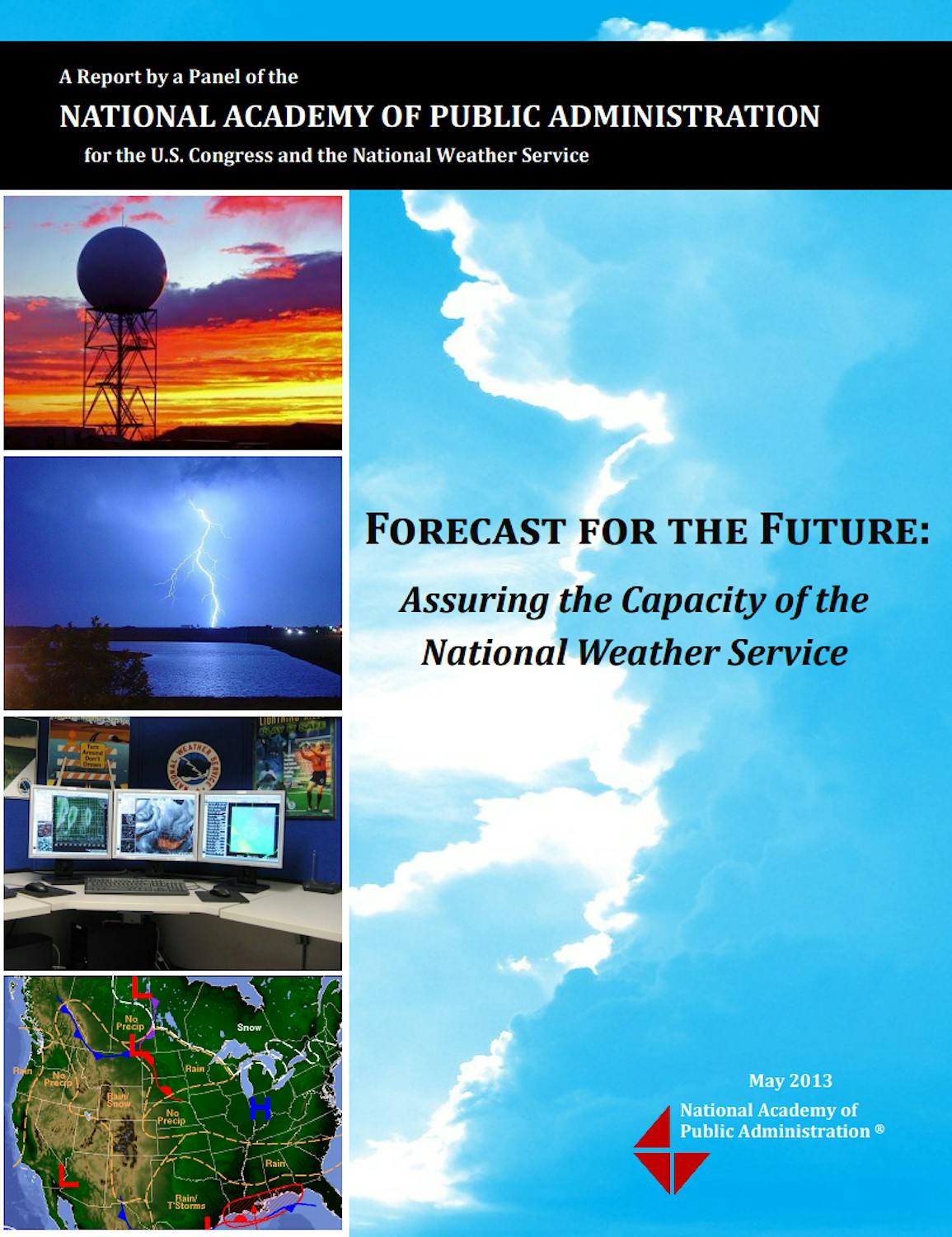
Forecast for the Future: Assuring the Capacity of the National Weather Service
Congress directed the National Weather Service (NWS) through the Consolidated and Continuing Appropriations Act, 2012 (H. Rept. 112-284, P.L. 112-55) to contract with an independent organization to evaluate efficiencies that can be made to NWS operations. The NWS selected the National Academy of Public Administration (the Academy) to conduct this independent assessment. The Academy formed a five-member Panel of Fellows to conduct the seven-month study of the NWS’s current operations and structure, and the challenges the agency will face going forward.
Click the button below to view the View Study Report.
View ReportKey Findings
The NWS finds itself operating in a changing environment with increasingly capable partners and a public with evolving expectations for weather information. In order to respond to evolving requirements and to refresh aging technology, additional and ongoing change is necessary in order to improve NWS operations. In addition, the NWS has articulated a new vision—to build a Weather-Ready Nation in which society is prepared for and responds to weather-dependent events. This is a significant shift in the NWS’s approach from weather product and service outputs to societal outcomes. The Panel found that without considerable engagement of stakeholders and a framework for change it will be difficult for the agency to fully achieve this vision.
Recommendations
The Panel, chaired by Mortimer L. Downey III, has issued fifteen recommendations intended to help the NWS manage additional and ongoing change. In order to realize the vision of building a Weather-Ready Nation, the Panel recommends the agency collaborate with partners through defined framework to manage significant change. The NWS will need to engage internal and external stakeholders to establish a common understanding of goals and clarify the capabilities and capacities of participants. Additional Panel recommendations include realigning resources; conducting infrastructure, dissemination systems, telecommunications, and facilities analyses; strengthening the corporate Research to Operations (R20) and Operations to Research (O2R) processes; and re-framing the labor/management relationship at the agency to provide the pre-decisional involvement sought by the union and the increased organizational results sought by management within a climate of mutual trust.
